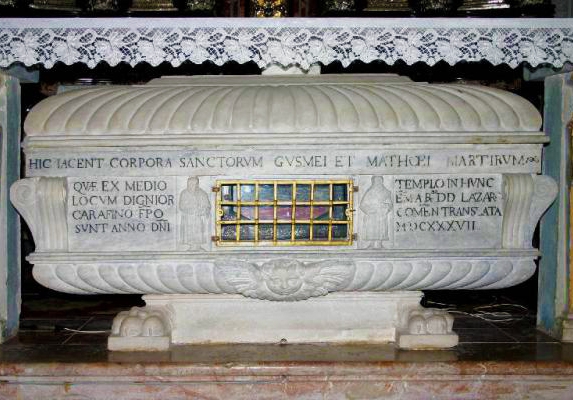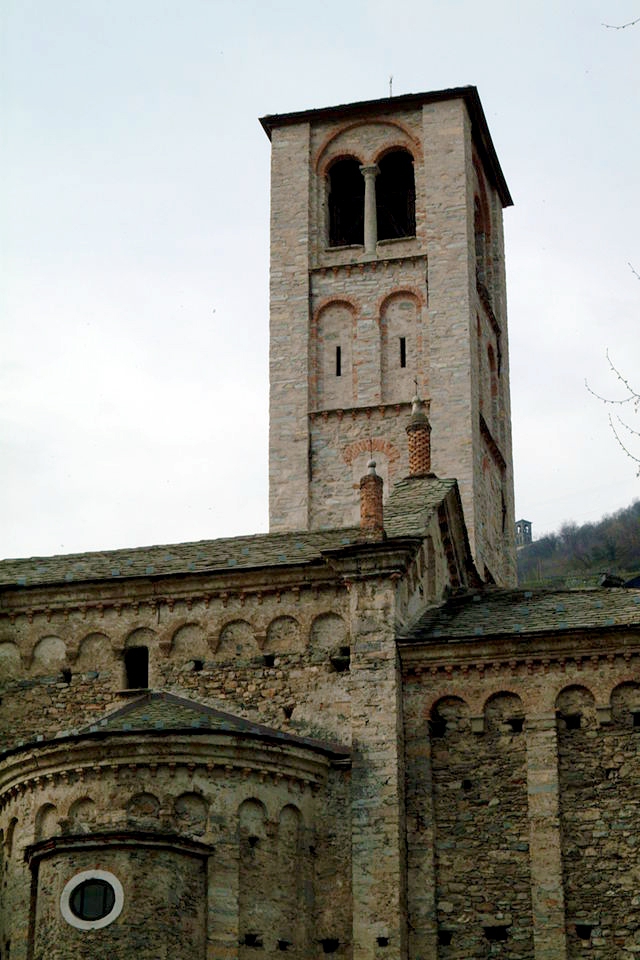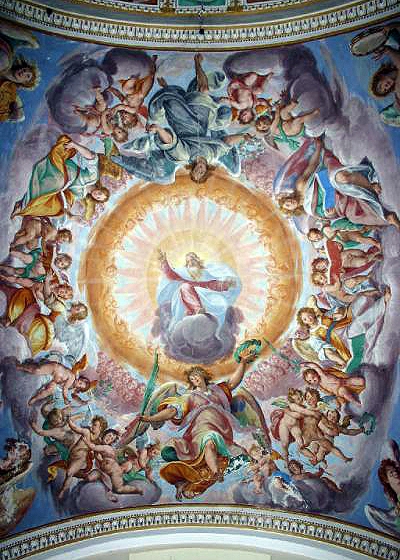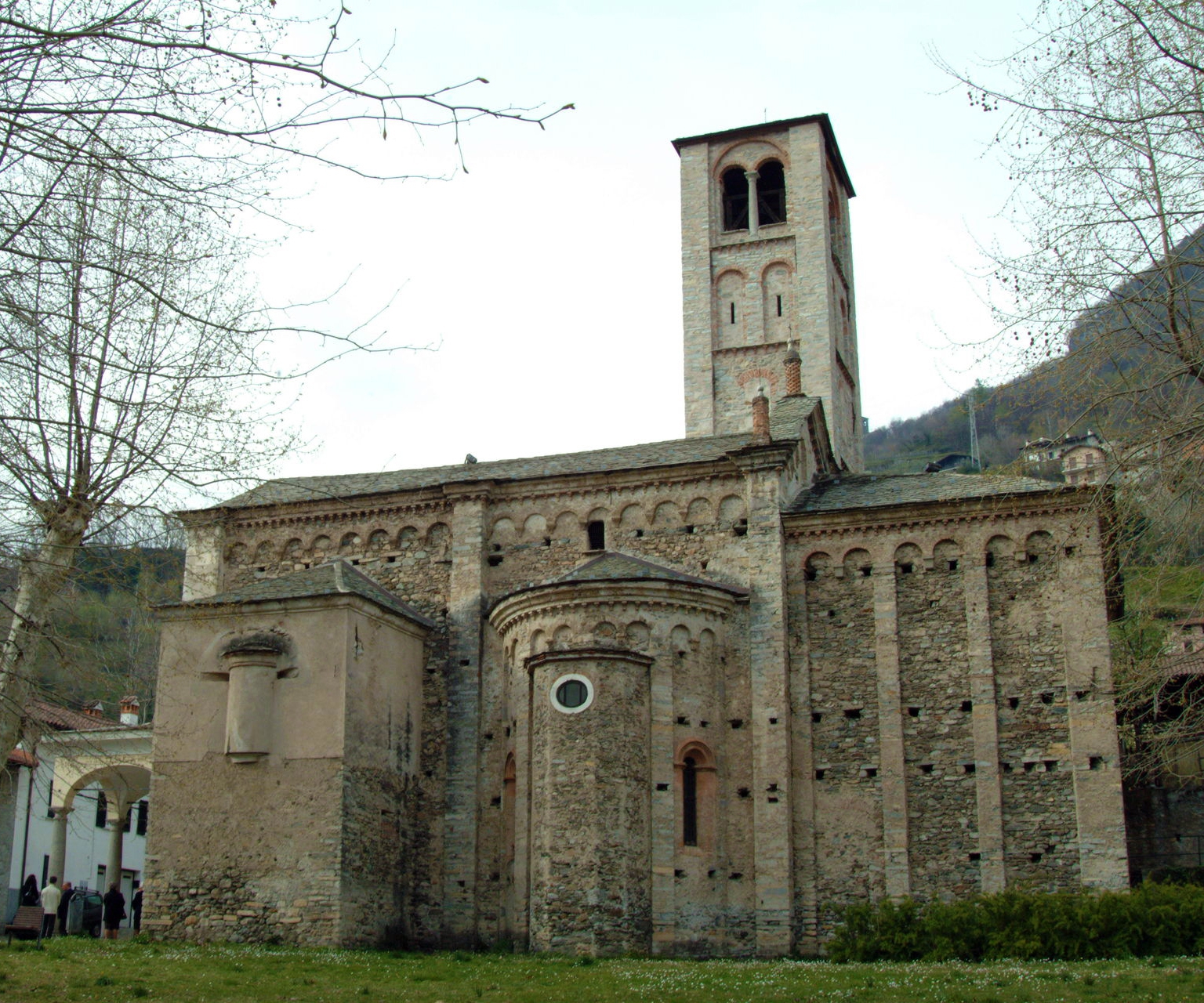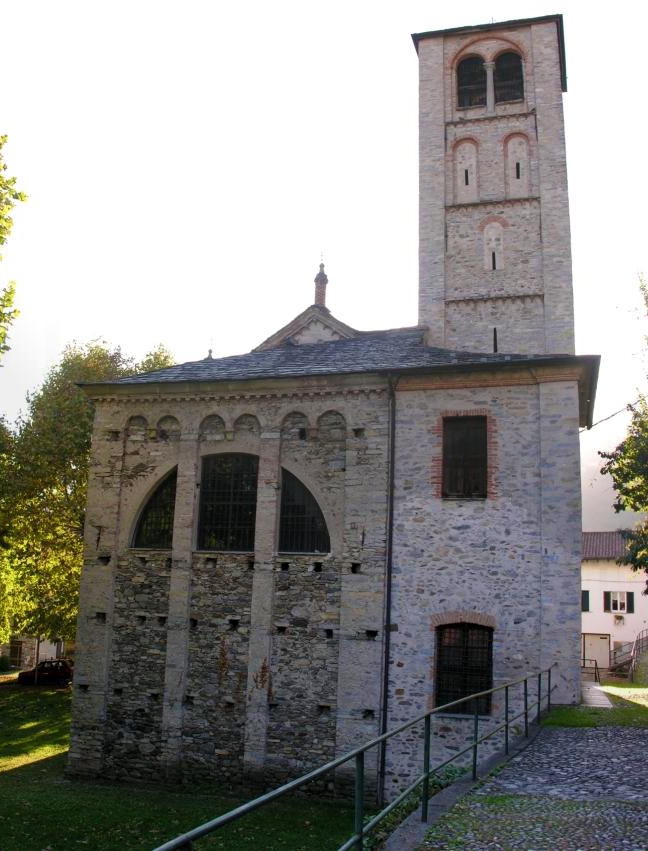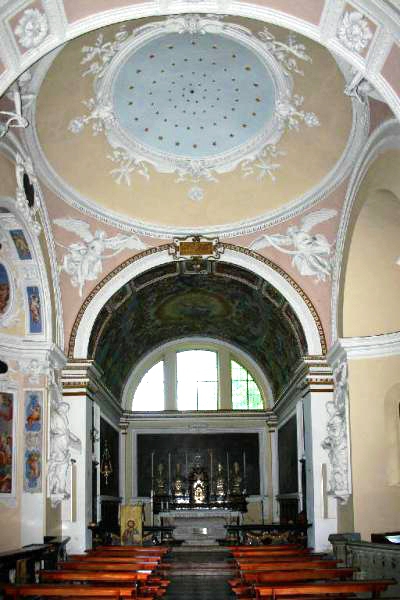San Gusmeo e Matteo Gravedona ed Uniti Like
San Gusmeo e Matteo: Description
In the year 286 at Octodorum, today Martigny, Maximilian ordered the slaughter of the Tebea legion since it had refused to make sacrifices to the Gods. Only some people, among them Carpoforo, Esante, Cassio, Licinio Severo, Gusmeo and Matteo succeeded in escaping to Milan but they were recognized as Christian and imprisoned. Fortunately Fedele, the jailor who had just converted to Christianity, opened the door of the prison and freed them. When Maximilian learned of their escape, he ordered his men to go and try to convince them to worship the Gods or otherwise execute them without pity. The fugitives were informed of his intention so they decided to separate: Licinio, Carpoforo, Esante and Cassio stayed in Como whereas Fedele fled to Samolaco and Gusmeo and Matteo fled to Gravedona. Maximilian’s men found them and cut off their heads since they still refused to give up their faith. Some pitiful Christians buried them exactly at the place of their death.
In 1248 the two martyrs’ remains were found and a church was built so that Christians of the lake could come and pray to the saints. Only in 1637 were their remains laid under the main altar as they can be found now. On the beautiful urn made of white marble the following inscription was written: “The corpses of the martyrs St. Gusmeo and St. Matteo lie here, whom were taken from the middle of the temple by Mons. Lazaro Carafino, Bishop in Como, in 1637″.
The church looks a bit like the church of S. Maria del Tiglio but it was smaller and less elegant. In fact, in 1530 it was decided to have it enlarged so in 1533 work began.
In 1606 Giovanni Mauro della Rovere, called the Fiammenghino, painted the valuable “God Father in the Glory" among angels, the three big paintings in the chorus showing the martyrdom and the invention of the Saint Martyrs. On the wall on the left: “The Predication of Saints Gusmeo and Matteo", in the middle “the Martyrdom" and on the right “The Recognition of the Corpses". The sacristy was completed in 1609, the bell tower dates back to 1616-17, the pronaos and the main door date back to the XVIII c. The Church remembers the two martyrs on 11th September.
More to Explore.
Lake Como's rich history of church building goes back many centuries. Their storied past includes miracles, political intrigue and competition for parishioner loyalty.

